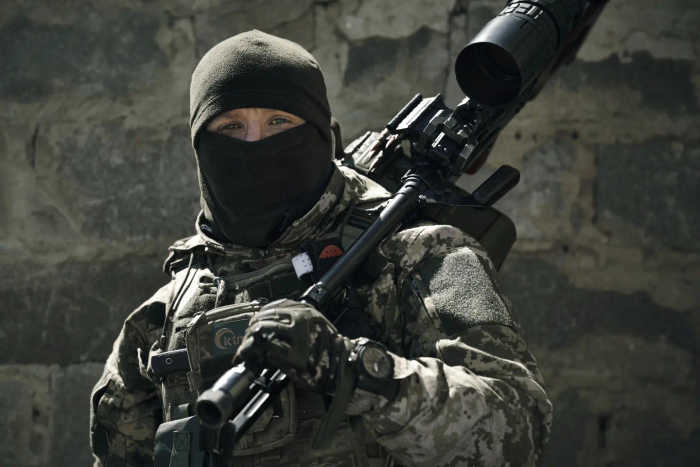Published 11:24 IST, May 22nd 2024
The Pentagon has detailed the extensive costs of Russia's invasion of Ukraine, emphasizing both immediate impacts and long-term challenges.
Advertisement
Pentagon: In a detailed assessment, the Pentagon has quantified the staggering costs of Russia's invasion of Ukraine, highlighting both the immediate impacts and the potential long-term challenges posed by Moscow's military reconstitution efforts. Speaking at Ramstein Air Base in Germany in March, U.S. Defense Secretary Lloyd Austin outlined the severe losses incurred by Russia over the past two years, emphasizing the high human and financial toll of the conflict.
"Russia has paid a staggering cost for [Russian President Vladimir] Putin’s imperial dreams," Austin declared before a gathering of international supporters of Ukraine. According to Austin, Russia's military has suffered over 315,000 troops killed or wounded, incurred over $211 billion in costs, and lost approximately 20 medium or large ships in the Black Sea. This grim tally underscores the immense scale of the conflict and the heavy price paid by Russia in its aggressive campaign.
Advertisement
Changing Tone: Russia's Recovery
By April, however, the U.S. Defense Department's tone had shifted. At a news conference, both Austin and Gen. CQ Brown, Chairman of the Joint Chiefs of Staff, acknowledged a concerning trend: Russia's ability to rapidly recover and reconstitute its military forces. "Russia has ramped up its production," Austin noted, highlighting the centralized control of Russia's defence industry, which has facilitated quicker recovery efforts. Gen. Brown added, "Russia has aggressively reconstituted its military force," signalling a significant shift in U.S. assessments of Russia's capabilities.

This evolving perspective reflects a recognition that Russia's military is recovering at a pace faster than anticipated. American officials have long detailed the costs to Russia's armed forces and economy, but recent observations indicate a swifter-than-expected reconstitution. This development has implications for Ukraine and its supporters, particularly the U.S., which approved an additional $48 billion in Ukraine-related security aid this April, expected to sustain Kyiv for another year. However, if Russia continues to rebuild its forces at this accelerated rate, it could pose a longer-term and potentially costlier challenge for the NATO alliance.
Advertisement
Three Key Factors Behind Kremlin's Resilience
- Resilient Defense Industry: Russia's defence industry has shown remarkable resilience, tripling its defence budget to approximately $130 billion-$140 billion in 2024, representing about 6% of GDP. This substantial budget increase has boosted salaries and attracted more workers to the defence sector, allowing for accelerated production and procurement of military hardware.
- Dodging Sanctions: Despite extensive Western sanctions aimed at crippling Russia's economy, Moscow has effectively rerouted its supply lines through friendly countries, particularly China. Trade between Russia and China has hit an all-time high, with Beijing supplying critical components needed for weapon production.
- Support from Other U.S. Adversaries: Russia has also received direct military aid from other adversaries, notably North Korea and Iran. North Korea has provided significant quantities of artillery rounds, while Iran has supplied attack drones, enhancing Russia's operational capabilities on the battlefield.
Sustainability of Military Growth
Despite these recovery efforts, questions remain about the sustainability of Russia's military operations. Adm. Tony Radakin, head of the U.K. armed forces, noted Russia's reliance on Soviet-era inventories and the challenges in training recruits. The high casualty rates and continued dependence on ageing equipment raise doubts about the long-term viability of Russia's military expansion.
-1716357240890.webp)
The rapid reconstitution of Russia's military forces has significant implications for NATO and Ukraine. While Russia's current capabilities may not pose an immediate threat to NATO, the potential for future escalations remains a concern. The sustainability of Ukraine's defence efforts is also in question, given its smaller defence industry and reliance on international support.
Advertisement
The Pentagon's assessment underscores the high costs of Russia's invasion of Ukraine and highlights the complex dynamics of military reconstitution and resilience. As Russia continues to rebuild its forces, the international community must remain vigilant and prepared for the evolving challenges in this ongoing conflict.
11:24 IST, May 22nd 2024